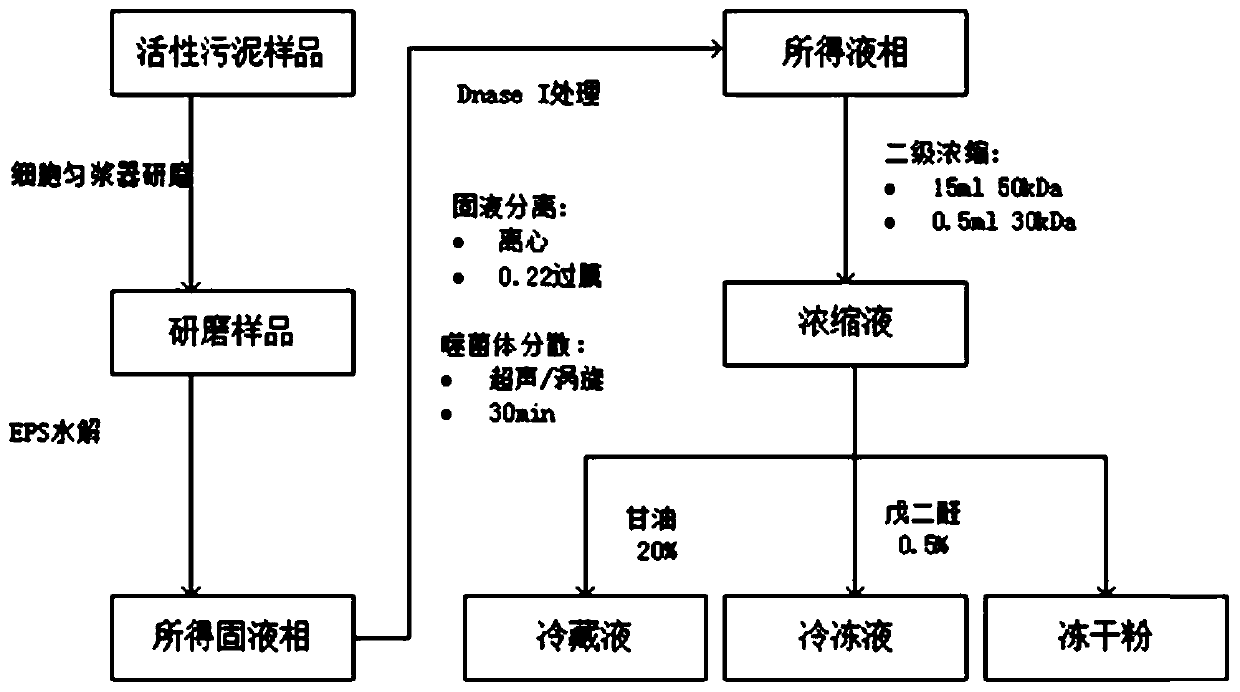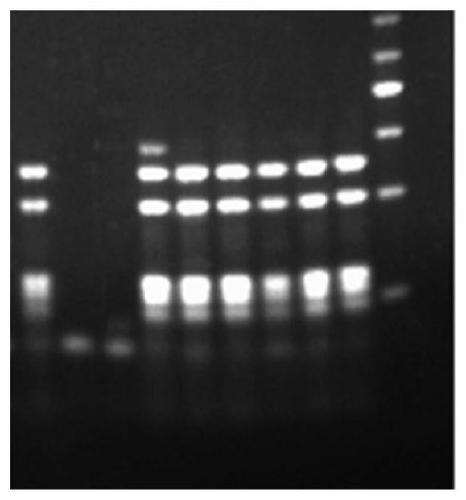Method for extracting and enriching phage from activated sludge
A technology of activated sludge and bacteriophage, which is applied in the direction of viruses/phages, biochemical equipment and methods, microorganisms, etc., can solve problems such as complex action mechanisms, and achieve the effects of short operation time, mild reaction conditions, and reduced dosage
- Summary
- Abstract
- Description
- Claims
- Application Information
AI Technical Summary
Problems solved by technology
Method used
Image
Examples
Embodiment
[0039] The purpose of this embodiment is to efficiently extract phage particles from aerobic granular sludge, specifically according to the following steps:
[0040] Step 1: Activated Sludge Grinding
[0041] Take 40ml of activated sludge and grind it in a 15ml cell grinder to disperse the sludge sample. Grind 10ml each time, four times in total. Finally, wash with 5ml PBS buffer solution, and collect all the sludge grinding solution and buffer solution in a 45ml centrifuge tube for the next step of enzymatic hydrolysis.
[0042] Before the sludge sample is ground, the sludge sample can be taken to measure its MLVSS, which can be used as a basic indicator of biomass.
[0043] Step 2: Sludge EPS hydrolysis
[0044] The above sludge samples were hydrolyzed by amylase to remove EPS in the sludge samples and reduce the impact of EPS on phage release. The amount of enzyme added to the sludge sample was twice the amount recommended by the kit. In this experiment, starch glucoam...
PUM
 Login to View More
Login to View More Abstract
Description
Claims
Application Information
 Login to View More
Login to View More - R&D
- Intellectual Property
- Life Sciences
- Materials
- Tech Scout
- Unparalleled Data Quality
- Higher Quality Content
- 60% Fewer Hallucinations
Browse by: Latest US Patents, China's latest patents, Technical Efficacy Thesaurus, Application Domain, Technology Topic, Popular Technical Reports.
© 2025 PatSnap. All rights reserved.Legal|Privacy policy|Modern Slavery Act Transparency Statement|Sitemap|About US| Contact US: help@patsnap.com



